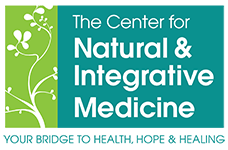 What is Dry Eye?
What is Dry Eye?
Keratoconjunctivitis, or Dry Eye is a condition in which the conjunctiva (the membranes on the surface of the eye) become red and inflamed. This occurs when the surface of the eye becomes dry due to a lack of quality tears. This dryness in the eye causes mild irritation in some patients, but severe discomfort and even visual problems in others.
There are two main reasons that Dry Eye occurs. The first is that the eye no longer makes enough tears to keep the surface moist, and the front surface of the eye or cornea dries out. Alternatively, the eye does make enough tears, but they evaporate too quickly. In this case, the tears produced are of poor quality, not adequately coating the surface of the eye.
Causes and Risk Factors
Almost anyone can experience this condition; Dry eye syndrome often occurs in people who are otherwise healthy. It is more common with older age, because you produce fewer tears with age. However, the following factors may increase your chance of developing Dry Eye:
•Some chronic conditions, like rheumatoid arthritis and Sjogrens Syndrome
•Certain medications which can cause excessive dryness, such as:
•Diuretics
•Beta-blockers
•Antihistamines
•Though very rare in the US and most developed countries, a deficiency in Vitamin A may contribute to the development of Dry Eye (and other serious eye problems).
•Hormonal Deficiencies – Due to low levels of testosterone in men and women
•Immunocompromised patients
•Thyroid hormone deficiencies
•Laser vision correction surgery, such as Lasik
Symptoms
The main symptom of Dry Eye is discomfort in the eye. This soreness can range from mild to severe. Other symptoms of Dry Eye include:
-The sensation of a foreign body in the eye
-Sensitivity to light (also called photophobia)
-Scratchiness in the eye
-Discomfort with contact lenses
Most cases of Dry Eye cause only discomfort. However, in severe cases, the dryness in the eye can lead to damage to the cornea. If this occurs, it is possible that vision may be permanently lost.
Diagnosis
Most of the time, the diagnosis of Dry Eye is made by an eye specialist who can quickly determine the cause of the discomfort by using specialized equipment to view the surface of the eye.
The tests may include:
Slit lamp visualization—The ophthalmologist may use a special instrument called a slit lamp (or biomicroscope) to look at the tear film on the ocular surface. The doctor can determine if there are enough tears to keep the eye moist.
Lissamine Green Dye Test—The ophthalmologist may use a special dye to evaluate the health of the corneal surface.
Schirmer’s test for dry eye—measures the rate of tear production using a calibrated litmus paper wick placed on the edge of the eyelid.
TBUT (Tear Break Up Time) – To analyze the integrity of the ocular tear film .
Treatment
Treatment for Dry Eye is often simple and very effective. This involves keeping the eye moist and preserving the tears that are made naturally. Treatment methods used for this goal include:
•Hot compresses or eyelash cleaning
•Lubricating eye drops—which are also known as artificial tears, mimic the eyes natural tears. These eye drops are available over-the-counter. They provide relief from the discomfort caused by Dry Eye and help maintain the natural moistness of the eye.
•Lubricating ointments – similar to artificial tears, except they have a much thicker consistency and last longer than eye drops. They are used to provide moisture for more severe cases of Dry Eye; however, because of the thick texture, the drops may cause vision to be blurry after administration. For this reason, they are usually used at night, before bedtime.
•Punctal plugs—Tiny plugs placed in the tear drainage ducts to help the tears stay on the surface of the eye
•Prescription Antibiotic Therapy eye drops
•Oral nutritional supplements—Some studies support supplementation of omega-3 fatty acids and other nutrients to help patients with dry eyes.
Prevention
It is not possible to prevent Dry Eye; however, it is possible to prevent complications, such as infections, from developing. To help reduce your chance that the condition will worsen, take the following steps:
-Try to avoid excessively dry environments—Furnaces and air conditioning can dry the air, which can evaporate tears too quickly. The use of a humidifier can help put moisture back into the air.
-Dusty and smoky areas can aggravate symptoms—If possible, limit time spent in these areas.
-Avoid prolonged visual tasks—Staring at a computer screen, driving, watching television, and reading may worsen symptoms.
-Promptly use artificial tears—This is important to prevent the eye surface from drying out.
It is important to receive preventive eye care and evaluation to diagnosis and prevent any of the more dangerous consequences of this condition. As always, a prompt discussion with your doctor is the best prevention of long-term consequences.
Here at the Center for Natural and Integrative Medicine, Dr. Kenneth Andronico specializes in Dry Eye and can devise a plan for preventive and anti aging eye health. Call today for an appointment: 407 355 9246
Dr. Andronico is available for appointments on Mondays and Tuesdays.

